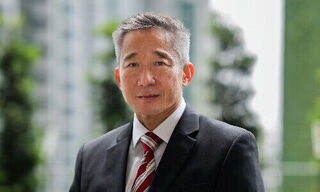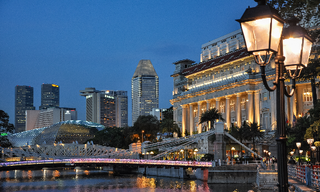Survey From ULI, PwC Ranks Tokyo And Sydney Top Real Estate Investment Markets
Real estate activity in Asia next year will reflect a continuation of trends seen in 2015 – an abundance of capital flowing to core space, as well as a flight to safe havens in the region’s most developed and liquid markets, according to Emerging Trends in Real Estate® Asia Pacific 2016, a real estate forecast jointly published by the Urban Land Institute (ULI) and PwC.
Japan and Australia remain the favorite countries for investment and development, with Tokyo, Sydney, Melbourne and Osaka taking four of the top five spots for promising markets in the Asia Pacific region. Ho Chi Minh City, rated fifth, rounds out the list of most favored markets.
“Asia’s real estate markets are the product of almost eight years of easy money from the world’s central banks. Although easing in the U.S. may be ending, both Japan and the European Union continue to provide liquidity, while interest rates in many Asian countries are lower than one year ago,” said ULI North Asia Chairman Raymond Chow, Executive Director, Hongkong Land Limited in Hong Kong. “This, combined with an allocation of capital from both local and global institutional investors, is resulting in more and more money chasing fewer and fewer real estate assets. This is pushing up prices across most markets and sectors, even as the current industry cycle appears to be winding down. We can expect this to continue throughout 2016, with the most attention being paid to markets perceived as offering certainty in terms of low risk and satisfactory returns.”
“As the bull market in Asian real estate enters its seventh year, the positive atmosphere is encouraging investors to sell assets purchased years ago in the wake of the global financial crisis. Our report finds that investors are increasingly opting to take profits and exit from deals made in recent years. Opportunistic returns lie in Japan, where cheap debt and high leverage provide outsized profits, and in China, where developers are in need of capital and liquidity is in short supply. Meanwhile, investors with an eye on a possible peak in the cycle are attracted to the safety of core assets in gateway cities,” said KK So, Asia Pacific Real Estate Tax Leader, PwC. “In terms of capital flows, investors continue to see increases in capital movements from Asia to real estate markets elsewhere in the world. The main contributor to this trend is China, where institutional, corporate, and private capital is buying mainly in Australia, Japan and the United States.”
Emerging Trends, which is being released at a series of events across Asia over the next several weeks, provides an outlook on Asia Pacific real estate investment and development trends, real estate finance and capital markets, and trends by property sector and metropolitan area. It is based on the opinions of 343 internationally renowned real estate professionals, including investors, developers, property company representatives, lenders, brokers and consultants.
The top five investment markets for 2016:
- Tokyo (ranked first for investment and development) – Tokyo “ticks all the boxes” for investors given its status as Asia’s top gateway city, and the market with the greatest depth and liquidity. Still, despite the continuous heavy activity fueled by easy credit and low interest rates, some are wary that the market is slowing. While the short-term outlook is favorable, a slowdown, accompanied by price stagnation or declines, could prove problematic for those needing to refinance high loan-to-value loans in the future, the report cautions.
- Sydney (second for investment and development) – Sydney is a draw for institutional investors seeking core office properties. The shortage of those assets and an influx of new investors competing for the properties, coupled with a depreciated local currency, is resulting in strong property yields. Real estate in Sydney is also benefiting from the transformation of Australia’s economy from a commodities-driven to a service sector-driven model. In addition, a significant number of office-to-residential conversions and redevelopment projects have drawn investor interest.
- Melbourne (third for investment and development) – Melbourne is perceived as offering a similar environment to Sydney. However, even with double-digit price increases in 2015, properties in the city remain more affordable than those in Sydney, mainly because more land is available for an expansion of the central business district (CBD). Absorption remains strong, both from newly arrived businesses and those moving from the suburbs to the core of the city.
- Osaka (fourth for investment, fifth for development) – Osaka continues to benefit Tokyo’s “spillover demand,” as investors migrate to the smaller city where competition is not as stiff. Yields for residential properties are particularly strong, although commercial assets are also performing well. The market’s impressive growth “marks the end of a long period of oversupply that plagued the city for years,” notes the report.
- Ho Chi Minh City (fifth for investment, fourth for development) – Ho Chi Minh City’s rating has soared over the past two years, jumping from 19th place in 2014 to one of the top five for 2016.The report attributes its surge in popularity to successful efforts by the government to stabilize the local currency and keep inflation in check, coupled with a revival of real estate lending by banks. In addition, improved market access for foreigners is drawing outside investors, who could significantly boost purchases of both residential and commercial properties.





















